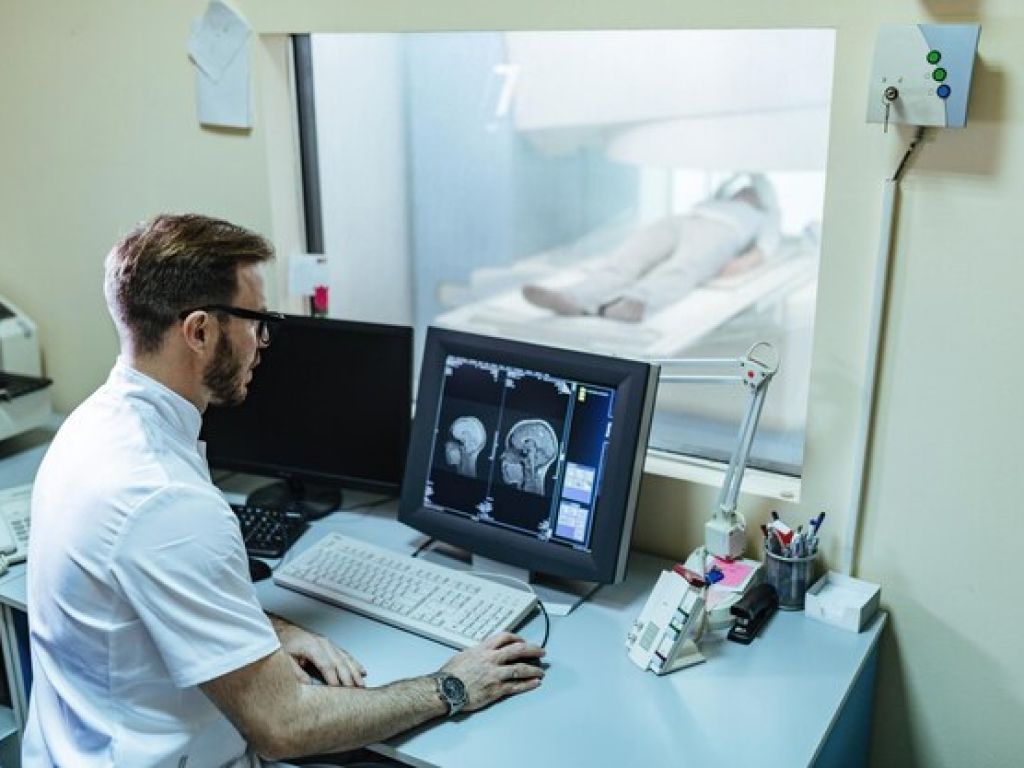Blog post
Artificial Intelligence in Radiology: Enhancing Diagnostic Accuracy
In this blog post, we'll explore the transformative role of AI.
Author:
Dr. James Anderson
Category:
Radiology
In the ever-evolving landscape of healthcare, technological advancements continue to reshape the way we approach diagnosis and treatment. One such groundbreaking innovation is the integration of artificial intelligence (AI) into radiology.
This powerful synergy between technology and medicine holds the promise of significantly enhancing diagnostic accuracy and revolutionizing patient care.
In this blog post, we'll explore the transformative role of AI in radiology, shedding light on how this cutting-edge technology is reshaping the field.
The Current Landscape of Radiology
Radiology has long been a cornerstone of medical diagnosis, providing invaluable insights into the human body through various imaging modalities like X-rays, CT scans, and MRIs.
However, the interpretation of these images has traditionally relied on the expertise of radiologists, who, while highly skilled, are susceptible to the limitations of human perception and the potential for fatigue.
The Role of Artificial Intelligence
Image Recognition and Analysis:
AI algorithms excel at image recognition and analysis. In radiology, this capability is harnessed to quickly and accurately identify abnormalities, lesions, or anomalies in medical images. The speed and precision of AI can significantly reduce the time it takes to reach a diagnosis.
Early Detection of Abnormalities:
AI algorithms have the potential to detect subtle abnormalities that might be overlooked by the human eye. This is particularly crucial in early disease detection, where timely intervention can dramatically improve patient outcomes.
Quantitative Analysis:
AI enables quantitative analysis of medical images, providing objective measurements of various parameters. This data-driven approach not only enhances diagnostic accuracy but also contributes to personalized treatment plans tailored to the specific needs of each patient.
Benefits of AI in Radiology
Efficiency and Speed:
AI algorithms can process and analyze large volumes of medical images in a fraction of the time it would take a human. This rapid processing speed is especially vital in emergency situations, where timely diagnosis can be a matter of life and death.
Reduced Variability:
Human interpretation of medical images can be subjective and may vary among radiologists. AI brings a level of consistency to the diagnostic process, minimizing variability and improving the reliability of results.
Enhanced Productivity:
By automating routine tasks and providing preliminary analyses, AI allows radiologists to focus more on complex cases and patient care. This not only enhances productivity but also contributes to a more fulfilling and impactful role for healthcare professionals.
Challenges and Ethical Considerations:
While the potential benefits of AI in radiology are vast, it's essential to acknowledge and address the challenges and ethical considerations associated with its implementation.
Ensuring data privacy, maintaining transparency in algorithm decision-making, and ongoing collaboration between AI systems and human experts are critical aspects of responsible AI integration.
Conclusion
Artificial intelligence in radiology marks a paradigm shift in healthcare, offering unparalleled capabilities to enhance diagnostic accuracy and patient outcomes. As the synergy between technology and medicine continues to advance, the future holds the promise of more sophisticated AI applications, further solidifying the role of AI as a transformative force in the field of radiology.
With responsible implementation and a commitment to ethical considerations, AI is poised to revolutionize healthcare, ushering in an era where precision and efficiency converge to redefine the standards of medical diagnosis and treatment.
Related posts
Our latest posts and news
At Hospital1, we offer a wide range of specialties to address your specific medical needs.







